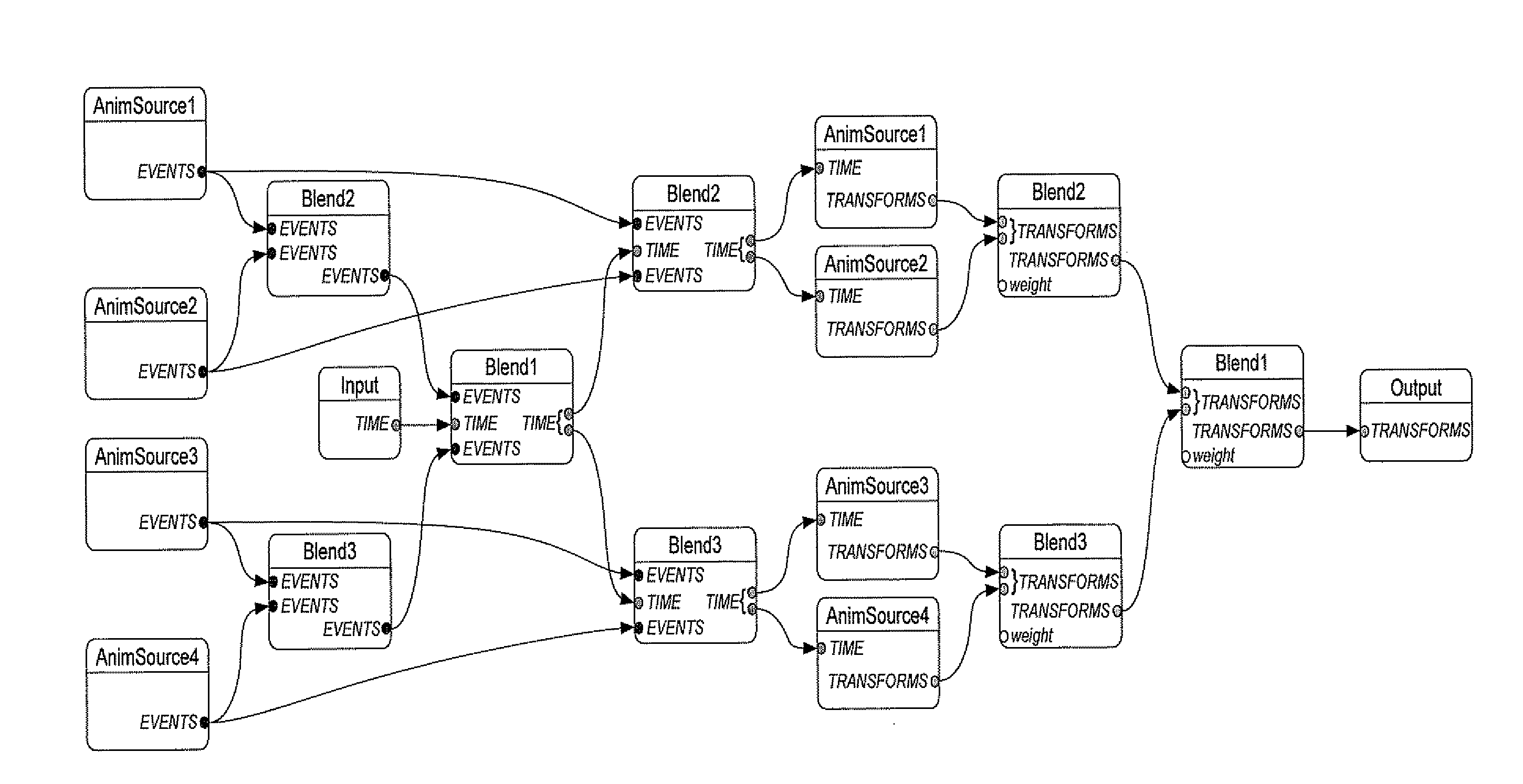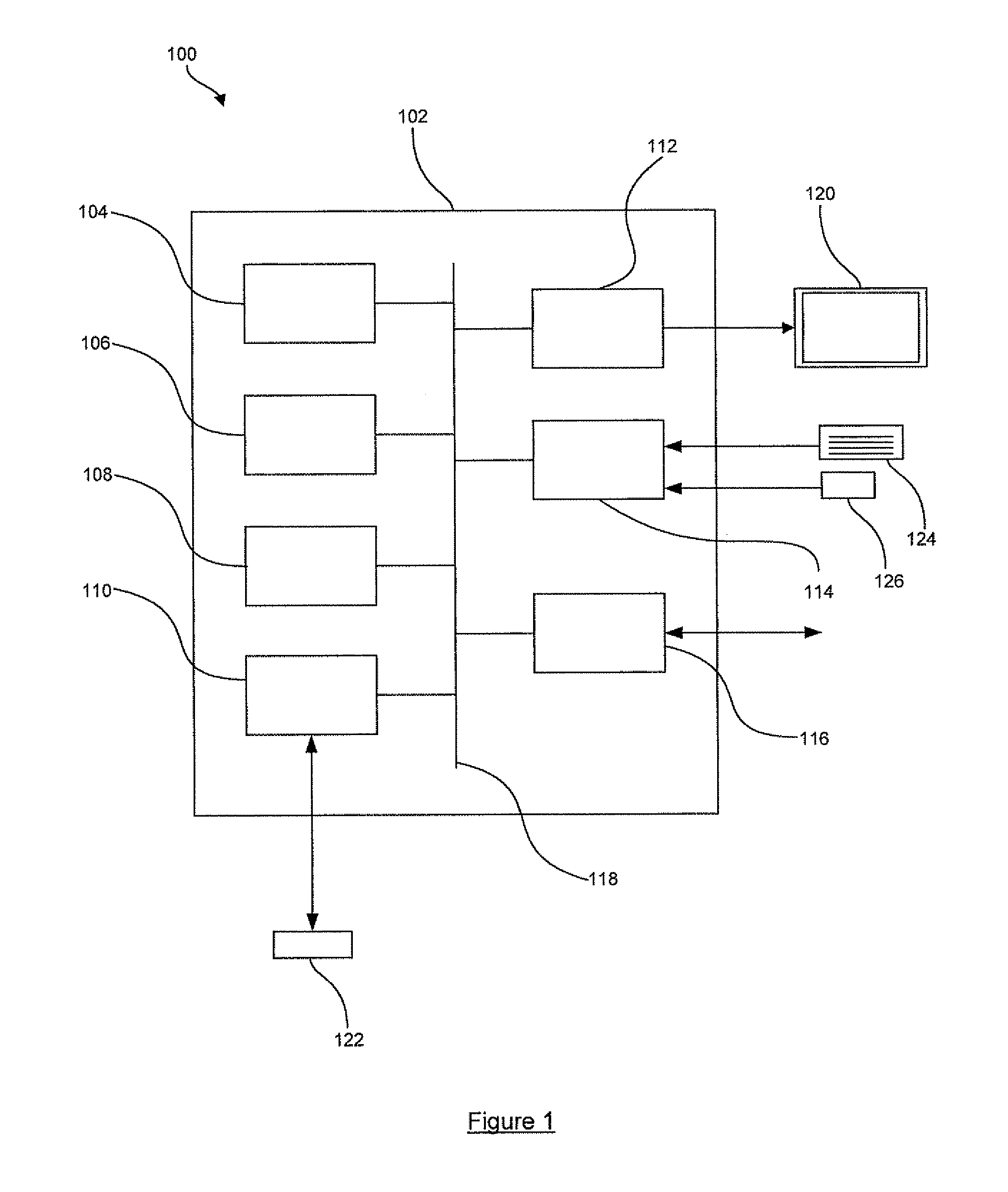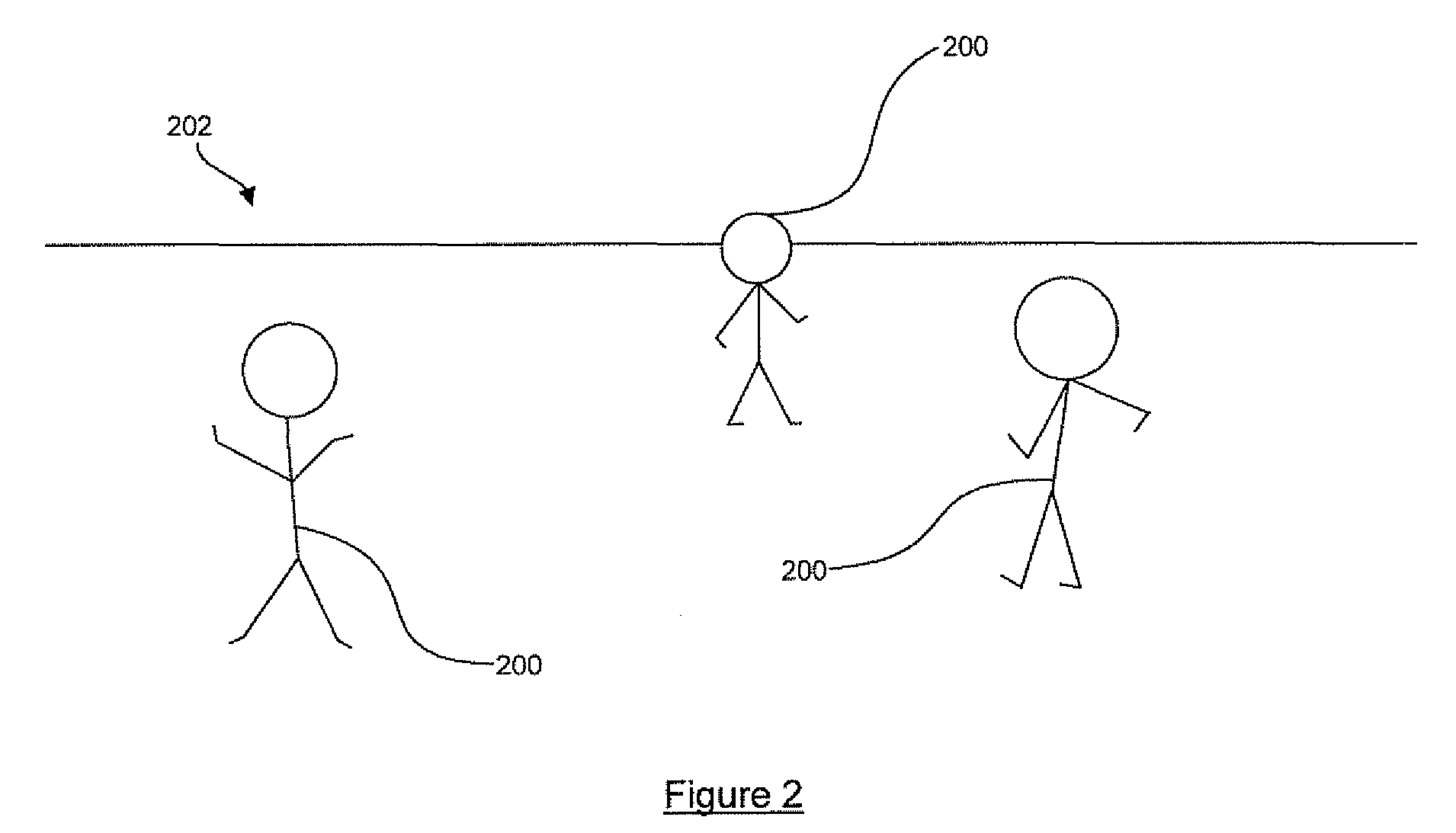Defining an animation of a virtual object within a virtual world
a virtual object and animation technology, applied in the field of defining an animation of a virtual object within a virtual world, can solve the problems of less realistic and aesthetically pleasing animation, post-processing use (or at least extensive use), and the graph-based approach has so far proved somewhat limited
- Summary
- Abstract
- Description
- Claims
- Application Information
AI Technical Summary
Benefits of technology
Problems solved by technology
Method used
Image
Examples
Embodiment Construction
[0057]In the description that follows and in the figures, certain embodiments of the invention are described. However, it will be appreciated that the invention is not limited to the embodiments that are described and that some embodiments may not include all of the features that are described below. It will be evident, however, that various modifications and changes may be made herein without departing from the broader spirit and scope of the invention as set forth in the appended claims.
[0058]Embodiments of the invention may be executed by a computer system. FIG. 1 schematically illustrates an example computer system 100 according to an embodiment of the invention. The system 100 comprises a computer 102. The computer 102 comprises: a storage medium 104, a memory 106, a processor 108, a storage medium interface 110, a user output interface 112, a user input interface 114 and a network interface 116, which are all linked together over one or more communication buses 118.
[0059]The s...
PUM
 Login to View More
Login to View More Abstract
Description
Claims
Application Information
 Login to View More
Login to View More - R&D
- Intellectual Property
- Life Sciences
- Materials
- Tech Scout
- Unparalleled Data Quality
- Higher Quality Content
- 60% Fewer Hallucinations
Browse by: Latest US Patents, China's latest patents, Technical Efficacy Thesaurus, Application Domain, Technology Topic, Popular Technical Reports.
© 2025 PatSnap. All rights reserved.Legal|Privacy policy|Modern Slavery Act Transparency Statement|Sitemap|About US| Contact US: help@patsnap.com



